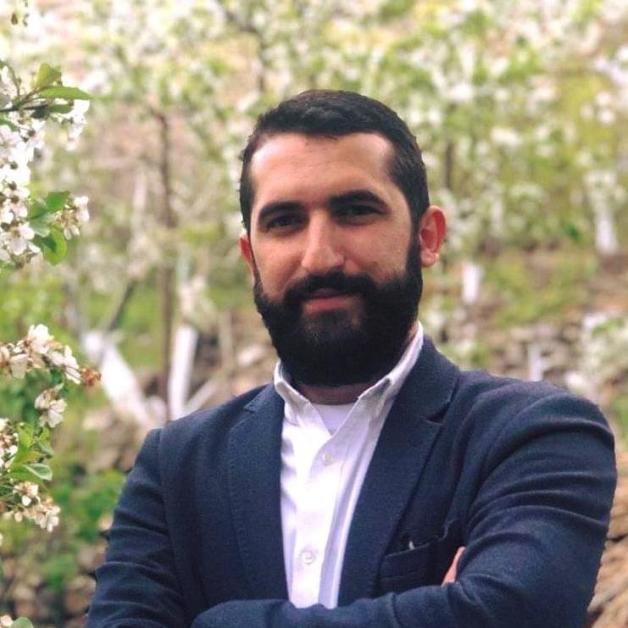
Azerbaijan's foreign policy strategy after Artsakh: total war. Varuzhan Geghamyan
The problem of "what then?"
After September 2023, when Azerbaijan defeated the lone Artsakh defense army in a one-day war and actually fully conquered the territory of the Republic of Artsakh, a kind of uncertainty began to prevail in the Armenian social and political opinion, which could be formulated through the everyday question "well, what about next?"
The reason for this uncertainty is very simple. in the perceptions of the majority of Armenians, the Artsakh issue was simply a question of the independence of the Armenians of Artsakh or joining Armenia, which, according to the same logic, is the only reason for our conflict with Azerbaijan. Let's leave aside the fact that this is a completely wrong perception (the Artsakh issue is just one episode of the permanent Armenian-Turkish conflict), and the national elites are primarily to blame for the fact that this perception is entrenched. At this moment, it is more important that even after the Artsakh issue is resolved, not in our favor, our public and most of the national elites sincerely do not understand what Azerbaijan (also Turkey) and other geopolitical actors want. Without understanding the tactics of the Azerbaijan-Turkey duo, it is impossible to understand the actions of the other players. This undecided situation leads to even greater despair, social polarization between different groups (pro-Western and pro-Russian), and a crisis of public and political thought. Enemy Azerbaijan-Turkey significantly contributes to the deepening of this situation, because it strongly weakens and reduces the power of resistance of Armenians.
Considering this very problem, I will try to outline the tactics of the Turkey-Azerbaijan couple after 2023 towards us and the region in general. This will partially answer the question "what next?" (of course, if this tactic is not opposed by any real Armenian forces).
Principles of Turkish strategy
In the last 150 years, Turkey's grand strategy towards the South Caucasus has always been as follows: to create a strong base in the South Caucasus in order to spread to other adjacent zones and regions of interest to it. To this end, Turkey (formerly the Ottoman Empire) made several attempts to occupy the South Caucasus through direct military intervention, but these attempts failed firstly due to local resistance and then to the active intervention of other players in the region (especially Iran and Russia). Here, in the meantime, let's remind once again that the latter's intervention stemmed from their own interests, and not from the mission of charity or "saving the peoples" (it's funny that there is still a need to explain this fact).
After the defeat of the military conquest, Turkey turned to other tactics. In order to ensure the gradual conquest of the Caucasus and the connection with other territories (in particular, the north of Iran, the north of the Caucasus, the Turkic-speaking zones of Central Asia), the Turkish elite initiated and implemented an interesting project. In one of the most strategically important parts of the South Caucasus, in the regions west of the Caspian Sea, where Turkic-speaking Muslims made up a large number of the population, to create a Turkic state entity that would be effectively a "small Turkey next to the big Turkey" and would serve as the main Turkish tool for the conquest of the South Caucasus. . Thus, the idea of the "Azerbaijan" state was designed in the Ottoman palace, which was successfully implemented by the Ottoman army in 1918. More than a hundred years after those incidents, it can be said that this tactic is moderately effective, but it works.
Since the 1990s, the political elite of Azerbaijan has made several attempts to get out of the framework drawn by Turkey, but in vain. Azerbaijan is essentially a Turkish project and will continue to be so. Especially since Turkey is not planning to allow real independence of Azerbaijan from it. On the contrary, the large-scale integration of the two state systems in recent years suggests that we are dealing with the merger of states. A very simple conclusion can be drawn from this. Azerbaijan's foreign policy fits into Turkey's foreign policy goals. Therefore, Azerbaijani policy is not guided by the caution and principle of compromise typical of a small country (as many imagine), but by a Turkish power with imperial goals.
So let's summarize the main strategic issue. to neutralize Armenia as a separate and independent political entity. The most effective step in that direction was in 1915. The Armenian Genocide, 1920 Armenian-Turkish war, 1921 The secession of Nakhichevan from Armenia, and nowadays the conquest of Artsakh. Now the target is the other strategic priority, Syunik.
It is important to remember that Armenia is not only an Armenian threat in the Turkish perception. The existence of an Armenian state in this area, which automatically implies an opposition to Turkish expansionism (because Turkey wants to occupy the entire Caucasus, which excludes the existence of an independent Armenian entity), will attract to itself with a unique geopolitical magnetic force many forces opposing Turkey's regional ambitions (such as nowadays Iran). For this reason, in the perception of the Turkish political elites, the Armenian-Turkish conflict is a part of Turkey's great geopolitical struggle, which has been going on since the days of the Ottoman Empire.
These strategic principles must be remembered in order to understand the remaining tactical operations.
Source: turkaget.am
Add new comment